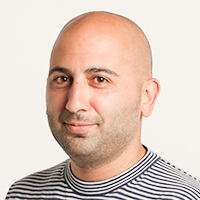Getting your Trinity Audio player ready...
As the shortage of doctors in Israel worsens, less than a third of new doctors are trained domestically, and the number of medical students is significantly below the average in developed countries, according to a new monitoring report by State Comptroller Matanyahu Englman released Tuesday.
Israel remains far from its target of 2,000 new medical students annually. In 2020, Israel had 3.3 doctors per 1,000 people, compared to 3.7 in developed countries.
According to the Health Ministry's forecast, which does not account for an increase in medical student numbers, the shortage will worsen by 2035, with only 3.02 doctors per 1,000 people. The state comptroller highlighted the intense competition for doctors in certain specialties, leading to well-resourced medical centers attracting doctors at the expense of weaker, peripheral centers, lengthening wait times, and closing services in outlying areas. This has already affected mental health services and is expected to impact additional medical specialties as the shortage persists.
Among the system's challenges is the aging medical workforce. In 2019, 883 doctors retired; by 2021, about a quarter of the doctors (approximately 10,700) were over the mandatory retirement age of 67. Another 10,000 doctors were between 55 and 66 years old.
One reason for continuing to employ doctors beyond the mandatory retirement age is the shortage of specialists. The high number of doctors nearing or surpassing retirement age suggests thousands will retire annually in the coming years. Furthermore, the reduction in intern shifts implemented in peripheral hospitals in September 2023 has increased the demand for doctors, exacerbating the shortage.
Amid the ongoing healthcare workforce crisis, Israel's population continues to grow rapidly. The country's total fertility rate, at 2.9 children per woman, is significantly higher than the OECD average of 1.61 children in 2020.
In response to the state comptroller's report, the Health Ministry noted that, after implementing all plans to increase the number of medical students, the doctor-to-population ratio is expected to rise to 3.7 doctors per 1,000 people by 2035.
"The ministry added that it is working with the Council for Higher Education to set targets for the number of medical students and that there are requests to open new medical schools (if approved, this would further increase the number of medical students)."
The latest report evaluated progress since the previous report in 2017 on medical student training, directing most of its criticism at the Health Ministry and the Council for Higher Education. Seven years later, and in line with OECD reports that already highlighted a severe shortage of doctors in Israel's health care system, the state comptroller also points to deficiencies in several fields.
"The current audit revealed that, according to data from the Civil Service Commission and the Health Ministry, there is a shortage of doctors in the following specialties: geriatrics, pediatric neurology, anesthesia, intensive care, general surgery, pediatric surgery, internal medicine, oncology, emergency medicine (intensive care), pathology, radiology, rehabilitation, neurology, forensic medicine and psychiatry," the report said.
The National Institute of Forensic Medicine recently attempted to recruit doctors from abroad to assist Israeli doctors, following a series of resignation letters submitted by specialists at the institute, some of whom have since retracted their resignations. According to the state comptroller’s forecast, the already severe situation is expected to worsen in the future.
Crisis deepens: shortage of 280 psychiatrists in Israel
The shortage of psychiatrists in Israel is becoming more acute, with an estimated deficit of 280 psychiatrists in hospitals and the community as of 2019, according to the report.
In 2022, a committee evaluating neurology recommended increasing the number of neurologists by approximately 300 specialists to meet the population's needs. The state comptroller emphasized the urgent need for psychiatrists, particularly in the public sector, due to the ongoing war's impact on the mental health and resilience of the Israeli public.
The Yatziv Reform, set to begin in 2026, will end the recognition of medical degrees from certain foreign institutions. This change is expected to hit Israel's geographical periphery the hardest, where a higher percentage of doctors are foreign graduates.
The state comptroller noted that in 2022, 51% of new doctors in the Negev and 63% in the Galilee were foreign graduates, accounting for 34% of all new doctors in Israel that year. The reform will thus significantly impact the number of doctors in peripheral regions.
The training of medical students in clinical years remains significantly lower compared to the OECD average. In 2020, only 24 students per 1,000 people were trained in Israel, compared to an OECD average of 38 per 1,000, with Denmark reaching as high as 80 students per 1,000. The issue of regulating clinical training for Israeli students studying abroad has not been adequately addressed since the previous review. The report highlighted that the Health Ministry and the Council for Higher Education have not jointly regulated the clinical training for these students, resulting in a lack of oversight and information.
Clinical fields, or the hospitals where students train during their clinical years, represent a bottleneck in increasing the number of medical students. While universities can relatively easily expand student numbers, hospitals face practical and preparedness challenges. Insufficient efforts have been made to address this issue.
"The current audit found that the Health Ministry and the Council for Higher Education, in collaboration with hospitals, have not developed an incentive model for departments running clinical fields," the state comptroller's report said.
"There is no economic mechanism to incentivize departments and teaching doctors, who undertake this complex task for many weeks. A mechanism is essential to meet the Health Ministry's 2030 target of 2,000 students, requiring at least 40 weeks of clinical training in four main departments, compared to the current 12-38 weeks."
Encouraging return of doctors from abroad
The state comptroller's review revealed that the Health Ministry lacks comprehensive data on thousands of doctors residing abroad, including the duration of their stay, expected return dates and a structured plan to bring them back. According to Health Ministry estimates, the number of doctors abroad has increased over the years, with approximately 3,700 doctors abroad in 2022. Not all doctors who leave return to Israel.
In August 2023, the end of the review period, the Health Ministry director-general informed the prime minister that proposed legislative changes in Israel have led to a concerning trend: many doctors are seriously considering leaving for abroad, and some have already taken steps to do so. Conversely, following the outbreak of the war on October 7, 2023, the ministry reported that about 4,000 Israeli doctors abroad expressed interest in returning to assist in the war effort.
"Given the severe implications of increasing numbers of Israeli doctors leaving for abroad, it is recommended that the Health Ministry map the data on Israeli doctors who left for training and research abroad, identify those who were supposed to return but did not, and encourage their return," advised the state comptroller.
In response, the Health Ministry said: "About a year ago, the Health Ministry initiated and established a committee to address the medical workforce shortage, led by Director-General Moshe Bar-Siman-Tov. This committee includes several subcommittees covering the medical workforce to address future challenges both in routine and emergency situations. This represents a significant change in medical training, with the ministry investing substantial resources and creating meticulous, professional long-term planning. This is also reflected in the state comptroller's monitoring report, alongside the fact that all recommendations from 2018 are in the process of being implemented.
"For several years, the ministry has been publishing the changes it leads and setting new targets continually. For example, in 2018, 713 students began medical studies, while today there are 1,132 students, aiming to meet the target of 1,200 medical students by October 2024.
"As part of the committee addressing the medical workforce shortage, the subcommittee led by Prof. Gamzu has developed a national mechanism for planning clinical fields. This plan aims to systematically and stably increase the number of medical students in line with national healthcare needs. Consequently, the target for medical students has been updated to 1,700 by October 2027. These goals are currently being worked on with deans of medical schools and universities. The necessary processes are deep and significant, often delayed due to the need for consensus from the medical and academic sectors.
"To increase the number of students, the ministry has taken extensive measures, such as canceling international programs in Israel, expanding clinical field training in the community, incentivizing hospitals and faculties to increase student numbers and regulating the training of foreign students. Additionally, a national team for managing and allocating clinical fields is being established, and payment rates are being standardized. These efforts represent the next phase in organizing clinical fields and ensuring their efficient supply.
"As part of the planning efforts, the ministry has initiated a data and active planning revolution. In recent years, data collection has included clinical field data, data on students abroad, data on interns and more, aiming to create precise measurements for long-term planning that anticipates crises rather than merely responding to them. The ministry has also focused on the quality of training, not just quantity, through several ongoing medical education programs in partnership with medical faculties.
"Additionally, the issue of integrating immigrant doctors and medical teams is currently undergoing significant progress. The Health Ministry, in collaboration with the Immigration and Absorption Ministry and the Nefesh B'Nefesh organization, is leading a joint program to streamline the absorption process for immigrant doctors, particularly in the north and south of Israel. To assist students who cannot study medicine in Israel or afford expensive studies abroad, a broad loan program (Ophakim Program) is being launched. This program will increase the supply of doctors, diversify the medical workforce, and direct these forces to needed specialties and hospitals and clinics in shortage areas, such as the periphery.
The Israeli Internal Medicine Association responded, "Delaying the resolution of the medical workforce crisis, particularly the senior staff shortage in internal medicine, to an unknown future is a recipe for disaster. This will severely impact the functioning of internal medicine departments, which are the foundation of hospital operations, treating approximately one-third of all inpatients. It will also harm the training of the next generation of Israeli doctors, who always spend significant time in internal medicine departments during their studies and early specialization.
"In July 2019, exactly five years ago, the Tur Kaspa report on strengthening internal medicine was published, predicting that the workforce crisis would worsen due to the impending retirement of about 40% of internal medicine department heads, along with senior specialists leaving for other sub-specialties. These trends occur against the backdrop of year-round heavy workloads in internal medicine departments, insufficient staffing and lack of economic attractiveness. This trend has intensified recently, and there are already difficulties in filling the roles of internal medicine department heads in some hospitals, including in central Israel. Quick-fix solutions are not viable. The government must undertake a series of broad and long-term measures. The plans and solutions are known to the Finance Ministry and the Health Ministry."
Shmuel Ben Yaakov, chairman of the Israel Patients' Rights Association, responded to the report's findings, highlighting the link between medical training and quality of care. "The report indicates that the Health Ministry and the Council for Higher Education have not implemented many of the state comptroller's previous recommendations," Ben Yaakov said
"Given the increasing shortage of medical personnel, which is expected to worsen due to the growing demands on the healthcare system, partly due to the prolongation of the current war, we call on all stakeholders in the Israeli healthcare system—including the Health Ministry, the Council for Higher Education, health funds, the Israeli Medical Association, medical centers, hospitals and the Finance Ministry—to join forces and work collaboratively to increase the number of trained doctors. This is essential to address patient needs in Israel's healthcare services, with a special focus on fields experiencing severe shortages, leading to long and unreasonable wait times."








